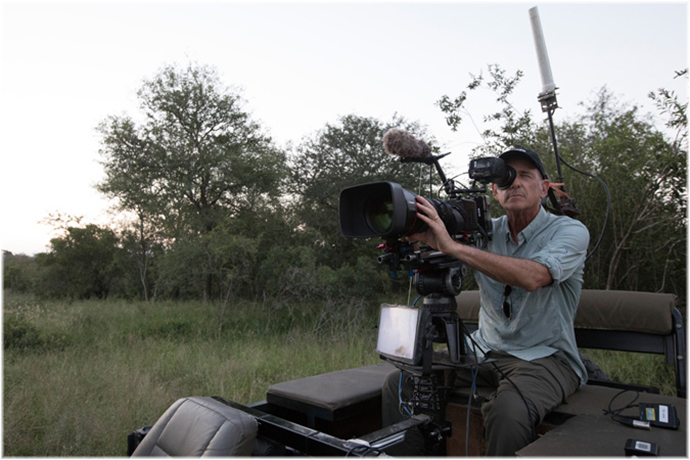
Earth Live involved 51 cameras in 24 locations on six continents — and nine of those cameras were the low-light Canon ME20F-SH, the company’s full-frame camera dedicated to shooting video, not stills. While most cameras can’t shoot without visible light, the ME20F can shoot in as little as the light from a quarter moon (or a sky full of stars), Canon says.
The tech behind the camera
The camera’s low-light capability is dictated by the size of the photosites, or the light-gathering areas of the sensor. The more megapixels a camera sticks onto a sensor (without changing the sensor size), the smaller those pixels are. Smaller pixels, with their limited surface area, can’t gather as much light as larger pixels. By using a large full-frame sensor but sticking with 1080p HD and not 4K, Canon was able to develop a video camera with more light-gathering capability than those before it.
With a 4 million ISO and the light of the moon, the Earth Live team was able to capture wildlife at night in full color. Al Berman of Berman Productions, one of the executive producers on the project along with Bunim-Murray Productions and Plimsoll Productions, equated the experience to seeing color TV for the first time. “We had to keep reminding the audience that this wasn’t during the day, that this was at night,” Berman said. “We kept calling it the ‘Moon Cam.’”
Berman was already toying with the idea of doing a live wildlife documentary when the Canon ME20F-SH was announced back in 2015. Looking at the camera’s specifications, he realized that, if those claims were true, he could also record wildlife at night. He tested the camera out at a wildlife sanctuary and, after seeing the results, pitched the idea to Tim Pastore, National Geographic Channel president. His response? Why not do the whole world?
Broadcasting the world, live
The camera allowed the team of cinematographers to capture wild animals in the areas of the world that were under darkness during the live broadcast. Besides just capturing the footage in full color, Berman says the camera allowed the team to record without affecting the wildlife, For example, using artificial lights could give the predator — or the prey — an advantage. “You’re also not limited by the throw of the light,” he explained. “You can see all the way to the horizon, seeing activity we haven’t seen before.”
Knowing the potential issues with attempting a worldwide live broadcast in the wild, the crew tackled one challenge at a time, Berman said. The team started with 94 potential locations, then scouted 35 of them exactly one year ahead of time to get an idea of what those spots would look like in July for the live project. A handful of locations had to be canceled — an underwater shoot was axed just prior to shooting because of high seas, while a planned shoot of flamingos in Mexico’s Yucatan was disrupted by some hungry crocodiles. Other plans were cancelled because of challenges in getting the satellites necessary for the live broadcast to the remote areas.
Filmmakers have been trending toward DSLRs because of the larger sensors, which along with being better for low light, offer a shallower depth of field for blurring the background. The ME20F-SH is Canon’s response to that trend — it’s a camera optimized for video instead of a still camera that can also shoot video. The fact that Canon already has a long list of compatible full-frame lenses for their DSLRs also gives the system an edge, said Alex Russel Sax, professional market specialist for Canon USA. “We’ve never had a product optimized for motion with this large of a sensor — you’d have to use a DSLR, but they are optimized for still photos first and motion second,” he said. “In still photography, you can do a lot in post production. In videography, you need edge-to-edge sharpness with minimal chromatic aberration. This is a camera that can be used in a wide variety of applications for that larger-than-life look — that’s what you get from a full-frame sensor.”
The Earth Live documentary is available for streaming (for users with a subscription to a number of different cable and streaming services) from National Geographic.



